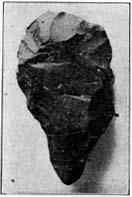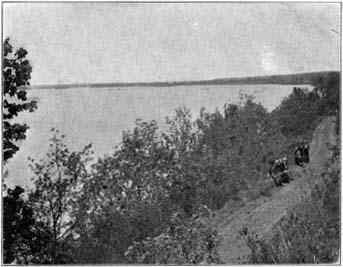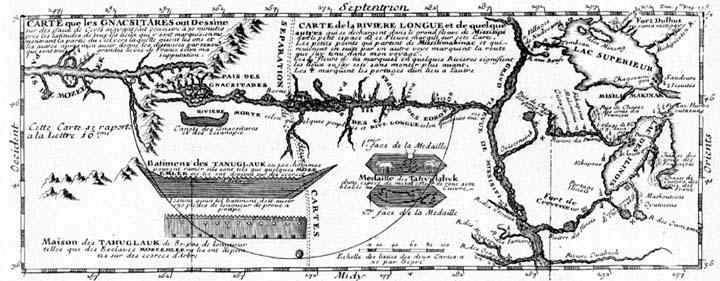had Quivira parades in Omaha wherein King
Tatarrax rode in all the savage glory of an early
Nebraska sovereign. In the twenty-five years since Judge
Savage presented his paper a great deal of new light has
been shed on the subject. The route of Coronado has been
minutely studied. It has been established beyond question
that the Quivira Indians were the Wichitas,--they being
the only Indians in all this region who built grass
houses. A great river which Coronado crossed on his way
to Quivira has been very closely identified as the
Arkansas. With these two points conceded it is not hard
to fix the valley of the Kansas river in the vicinity of
Fort Riley as the true site of Quivira. Here are the
remains of a vast former Indian population,--acres of
rough flint axes, knives and arrow heads, and at a
distance of a few miles other remains of finer flint
workmanship mixed with thousands of fragments of pottery.
Explorations begun in 1896 on this site by Mr. J. V.
Brower, of Minnesota, culminated in the declaration by
him that he had rediscovered Quivira. In the summer of
1902 the writer was present at the unveiling of a granite
monument a few miles from Fort Riley designed to
commemorate the rediscovery. The last word is not yet
said in the Quivira controversy, but the present weight
of opinion and evidence is that Coronado was mistaken in
his reckoning of latitude, did not cross the fortieth
degree into Nebraska, and that Quivira was in the Kansas
valley instead of the Platte. So much space is here given
to the subject because the story of Coronado and Quivira
has passed into current Nebraska newspaper literature
with the assumption that they were proven to belong to
Nebraska history.
Between the time of the
Coronado expedition in 1541 and the Mallet journey in
1740 Nebraska was Fable-land or Liar's Paradise. The
Spanish and French literature of that period is filled
with the most fantastic tales of wonderful nations, vast
cities, great treasure of gold and silver all located in
Nebraska. A number of these were accepted for many years
as real, narratives of journeys into this region. Some of
them are still quoted in historical works. A brief
reference to the more important of these romances belongs
properly to a history of Nebraska. It might perhaps be
called "the legendary history of Nebraska" if the legends
were not known to be fabrications of the authors and
not-like the fables of early Rome-popular tales handed
down by word of mouth for many generations before they
were written.
One of the earliest of
these stories is connected with Onate who was governor of
New Mexico from 1598 to 1608. In the year 1601 he led an
expedition of 80 men northeast across the plains a
distance of about 700 miles in search of Quivira. He
fought a battle with, an Indian tribe whom he calls
"Escanjaques," killing 1,000 of them. Large villages were
seen beyond and reports were brought him

The Quivira Tomahawk
|






